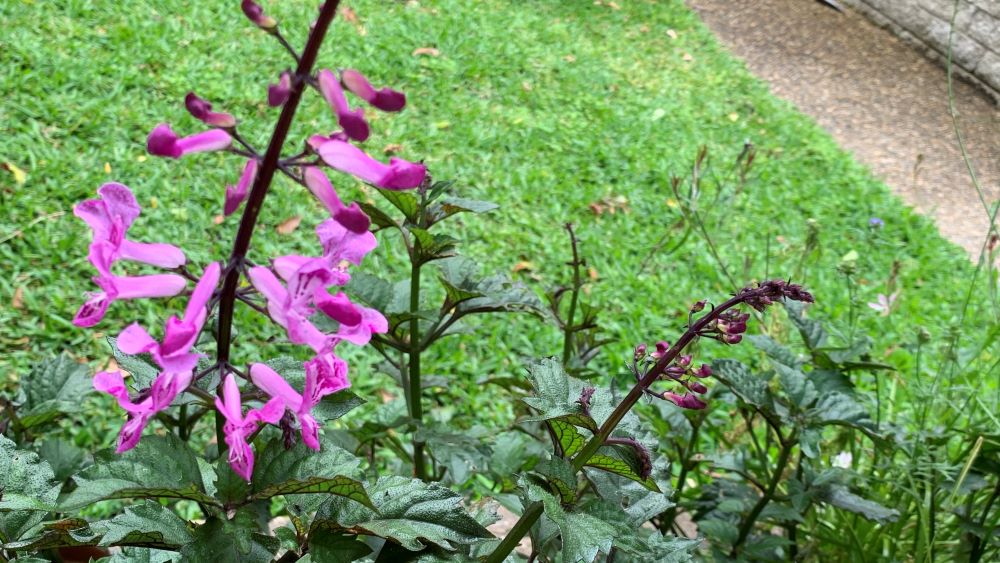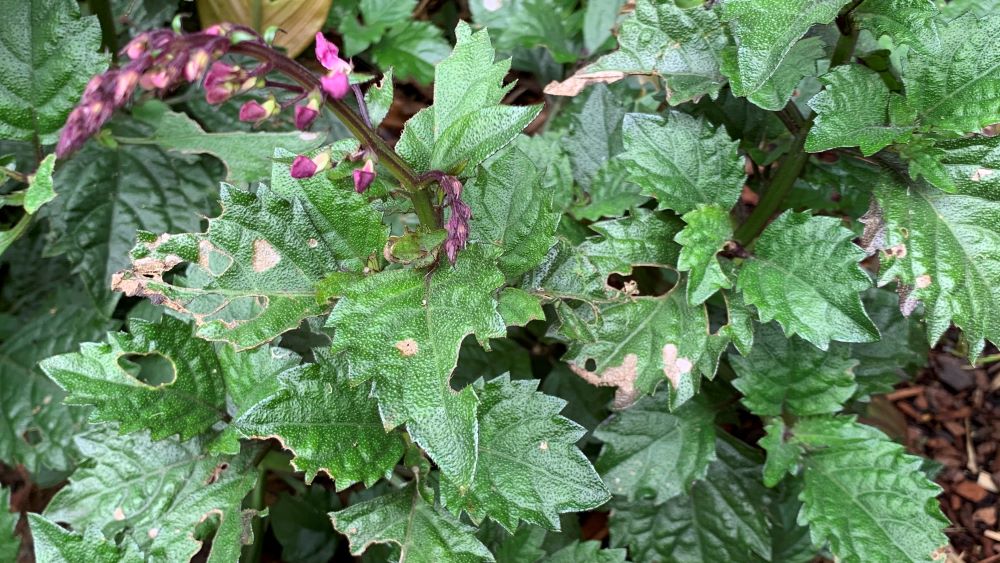Prune mona lavender twice per year to keep it flowering throughout spring, summer and fall. Prune it after the first flowers have finished growing. Prune the plant again in fall after it has finished flowering before the cold weather arrives. Shape the plant at the end of fall to keep it neat and to the size you like.
This article will explore how to prune mona lavender, when to prune the plant for more flowers and how to prepare your plant for winter.

When to prune Mona Lavender
There are two times per year that work best to prune mona lavender in spring and fall.
1. Prune mona lavender after the first flowers in spring
Mona lavender will grow flowers in spring which will last for around 4-6 weeks. After the flowers have grown, dried and have finished, trim the plant below the flower to remove the flower head. This will help to tidy up the plant and also encourage it to grow new stems and flowers.
Mona lavender can grow up to 3 flushes of flowers over the season or keep a continual display of flowers if they are trimmed regularly.

2. Prune mona lavender in fall
The second time it is important to prune mona lavender is at the end of fall. The plant will have finished flowering and may have some old or broken stems. Prune the flower heads 1-2 inches below the stem and take the time to trim any stems that have grown in the wrong direction.
You can remove any stems that have stretched wider that you want. My plant grew rapidly this year growing to over 3 feet in a few months. To keep it to this size I will remove the outer stems to keep the plant compact and fitting in the space I have.
3. Deadheading mona lavender
Remove any old flower heads or ‘deadhead’ your mona lavender anytime you see flowers that have finished. Mona lavender are long lasting flowers but when they have dried you can snip them off to give some more room for other flowers to grow.
Do this throughout the whole growing season from spring, summer through to fall. Mona lavender will continue to grow large flowers throughout this time.
How to prune mona lavender
Here are my top tips to prune mona lavender at home for more flowers and a healthy plant.
1. Use sharp, clean secateurs
Whenever you are pruning mona lavender always use sharp, clean secateurs. Clean your secateurs using warm soapy water and dry them thoroughly. After you have finished pruning you can wipe the secateurs with some vegetable oil to protect them from rust.
Always use clean secateurs so you don’t transfer any diseases from one plant to another. Sharp secateurs will make clean cuts on the stems and avoid crushing them or causing damage. The stem can heal over and the plant will send up new stems and branch out.
2. Remove any damaged stems
Take the time to remove any damaged stems below the damage. Any damage on the stems can be an entry point for fungus, diseases or make it easier for pests to attack. If stems are damaged they will usually turn brown and may bend over.
If they are touching the ground they can easily pick up fungus or pests from the ground. Chop the stems off and compost them to keep your plant healthy.
3. Tip prune regularly to keep the plant compact
To keep mona lavender tight, tidy and compact you can tip prune the plant regularly. Removing the first 2-3 inches of the stems can keep the plant smaller. Take care not to remove the tips if you want the flowers to grow in early spring.
Flowers will grow from the ends of the stems so wait until the flowers have grown or finished before you snip. That way you can keep the plant tidy but still allow it to flower.
How to prepare mona lavender for winter
Here are my top tips to prepare mona lavender for winter to keep them healthy and tidy.
1. Prune the old flowers
Take the time to prune of old flowers. Flowers that are no longer bright purple are dry and bending over it is time to snip them off. Prune the flower off below the last flower bud and put it in your compost.
2. Prune broken or damaged stems
Remove any old or broken stems by cutting them off below the break. Stems can become broken by the wind, pets or kids or will naturally die off over time. Remove any brown or broken stems to give the plant the room to grow new ones.
3. Prune the mona lavender to shape
Take the time to prune your mona lavender to the shape you want. Do this after the first spring flowering or again in fall. You can prune off any branches that are growing in the wrong direction or trim off the tips after they have flowered to keep the plant compact.
4. Surround the plant with mulch
After pruning in fall surround the mona lavender with a 2-3 inch layer of bark mulch. This will help to protect the plant roots in winter, to keep the soil healthy and to protect soil bacteria and worms.
5. Slow release fertilizer
Add some slow release fertilizer to your mona lavender plant in fall to give it some fertilizer to survive winter. I like to add pelleted chicken manure which is a fertilizer high in organic material which will feed the soil including the worms. It will improve the soil over time and improve the roots growth of the plant.
Pruning Mona Lavender (Plectranthus) | Summary
Prune mona lavender after the first flowering in spring and again in fall. Take the time to trim off any dead flower heads throughout the spring and summer and remove any broken stems. Remove any stems that have grown wider than you want them to. Plectranthus can grow up to 3 feet wide so feel free to take any stems that are taking over other plants.
Mona lavender are a hardy plant and once they have established in the soil they are drought hardy. They are easily overwatered so look out for brown or black marks on the leaves.
I am an accredited practicing dietitian, experienced gardener and a dedicated cook. I love writing and sharing my experience so you can learn from my successes and mistakes.
